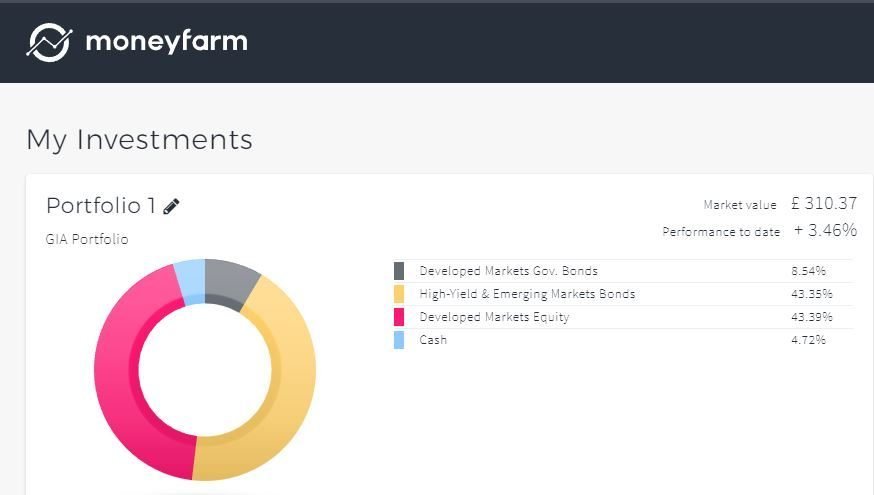London, 17th August 2017.
Six months ago we started the Great British Wealth Off experiment to show investors that sometimes the outcomes from a range of different solutions can be pretty similar.
Why did we do this? Well, if you’re an avid reader of the consumer finance press, you would be forgiven for thinking that robo-advisers and passive are now the only way to invest; that active fund managers are passé; that advisers don’t add value. Yada, yada, yada.
But it’s not that simple. We wanted to show ordinary consumers that sometimes there is very little clear blue water between different types of investments.
A cheap-as-chips tracker might not cost you very much, but if the markets are volatile the chances are your gains won’t be up to much either. Of course (down trolls, I’m about to tell them) an actively managed fund is also going to suffer from the same volatility. However, if the fund’s well managed and the manager is worth his salt, he should be able to cushion his losses.
In addition, your personal preferences count too. Some people prefer to use an adviser and others prefer to pick their own investments.
The investments – six months on
We selected five different investments and started them all on 2nd February 2017. They were: one robo‐adviser (Moneyfarm), one active fund of funds (Architas MA Active Progressive), two active multi‐asset funds (MI Hawksmoor Vanbrugh and Royal London Sustainable World), and one passive fund of funds (Vanguard LifeStrategy 80% equity). Last but not least we put together two portfolios, one active and one passive, to act as control portfolios for our Great British Wealth‐Off experiment. For full details of the portfolios click here.
Below is the list of our investments six months into the experiment. During this six-month period, the FTSE 100 rose by 3.8% and the FTSE World Index was up 8.3%. The values (net of all fees and charges) range from £310.37 to £330.63. The range in percentage terms is from 3.5% to 10.2%.
| Investments | Type | Value (£) | Growth % |
|---|---|---|---|
| Royal London Sustainable World, DIY platform | Active | 330.63 | 10.21 |
| Royal London Sustainable World, direct | Active | 330.48 | 10.16 |
| Royal London Sustainable World, adviser | Active | 329.46 | 9.82 |
| Active portfolio, DIY platform | Active | 321.09 | 7.03 |
| Active portfolio, direct | Active | 320.49 | 6.83 |
| Active portfolio, through adviser | Active | 319.95 | 6.65 |
| Architas MA Active Progressive, DIY platform | Active | 318.33 | 6.11 |
| Architas MA Active Progressive, direct | Active | 317.70 | 5.90 |
| Architas MA Active Progressive, through adviser | Active | 317.25 | 5.75 |
| Passive portfolio, direct | Passive | 317.01 | 5.67 |
| Passive portfolio, DIY platform | Passive | 316.65 | 5.55 |
| Vanguard LifeStrategy 80% Equity, direct | Passive | 315.96 | 5.32 |
| Vanguard LifeStrategy 80% Equity, DIY platform | Passive | 315.57 | 5.19 |
| Passive portfolio, adviser | Passive | 315.57 | 5.19 |
| MI Hawksmoor Vanbrugh, DIY platform | Active | 314.58 | 4.86 |
| Vanguard Life Strategy 80% Equity, adviser | Passive | 314.49 | 4.83 |
| MI Hawksmoor Vanbrugh, direct | Active | 313.83 | 4.61 |
| MI Hawksmoor Vanbrugh, adviser | Active | 313.50 | 4.50 |
| Moneyfarm | Robo | 310.37 | 3.46 |
The best-performing investment so far is the actively managed Royal London Sustainable World fund invested through a DIY platform. The fund returned 10.2% net of fees, which is pretty good going considering the FTSE World Index returned 8.3%. Snapping at its heels were the direct and advised versions.
Overall, the active portfolios have generally performed better than the passive ones; only the MI Hawksmoor Vanbrugh did worse. Compare and contrast to the Vanguard Life Strategy 80% fund, a blend of Vanguard index trackers and one of the cheapest investment solutions on the market. It has undoubtedly been affected by the performance of its component indices.
Lastly, there was Moneyfarm. We picked Moneyfarm because its minimum investment is £50. It also doesn’t charge an admin fee for holdings below £10,000, which means that only ETF charges have been applied.

Of course, this is just six months. The ideal holding period for any investment is at least three to five years, and we’ll keep the experiment for as long as possible.
The next update will be in November – stay tuned.
Sign up for the newsletter so you don’t miss out: https://compareandinvest.co.uk/
Download the full press release here

